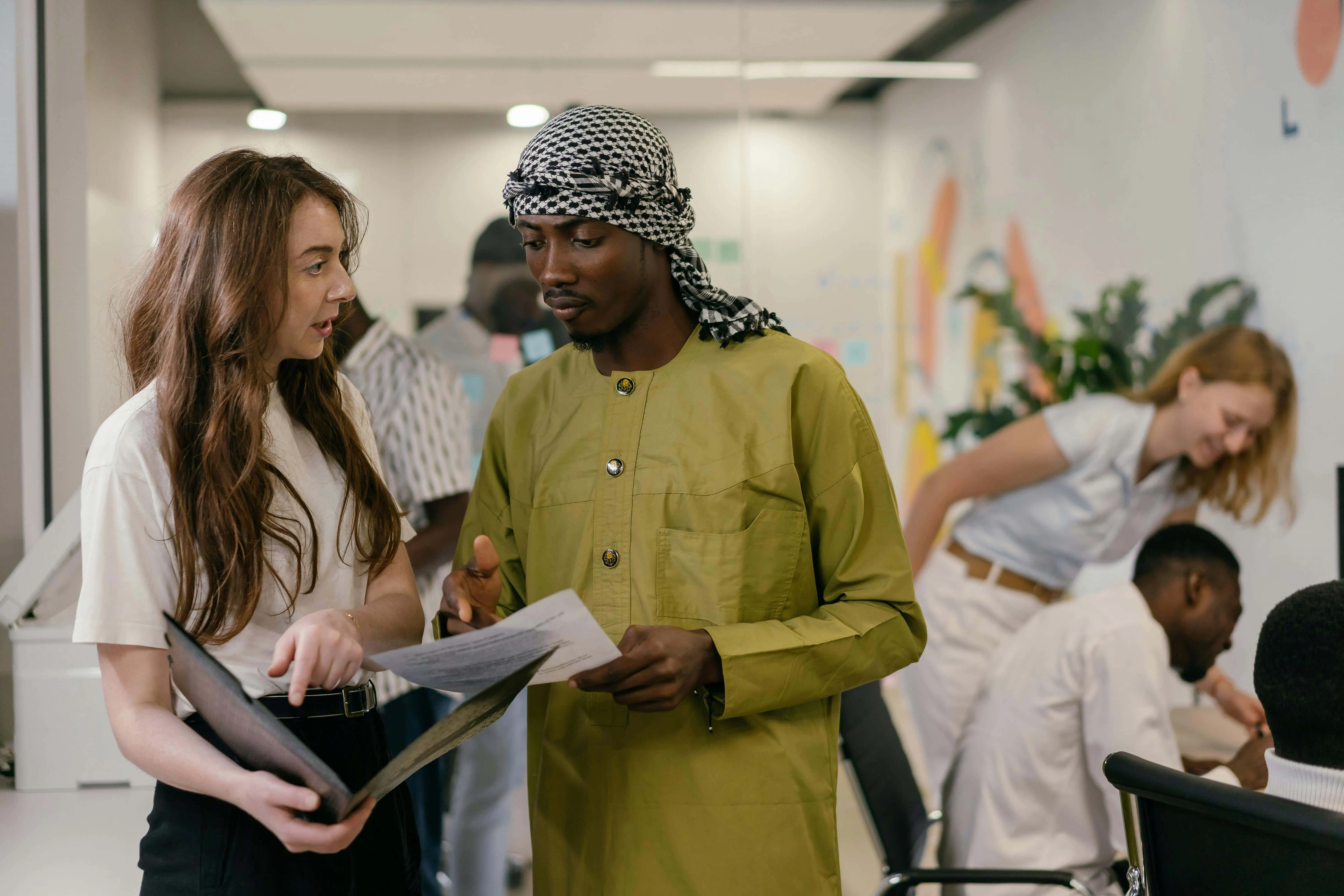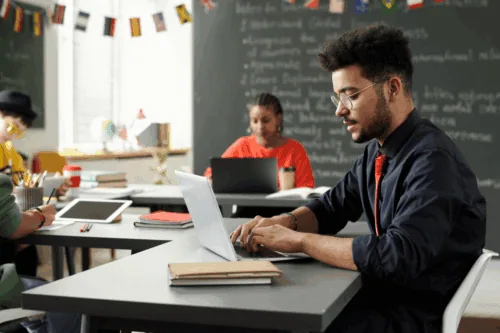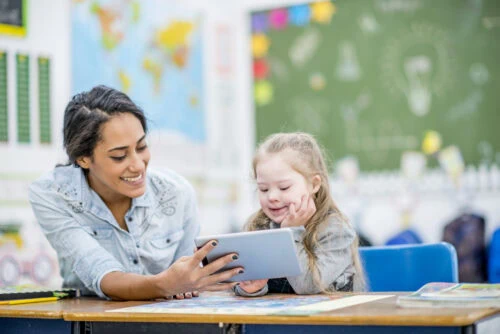Welcome to our in-depth exploration of multiculturalism in education, a crucial element for creating inclusive and diverse environments in schools worldwide. As the world becomes more interconnected, the importance of educating young minds to appreciate and understand cultural diversity cannot be overstated. This guide is designed for potential entry-level job seekers, educators, and anyone interested in the role of multicultural practices in shaping responsive and empathetic educational settings.
Why Multicultural Education?
Multiculturalism in education isn’t just about introducing students to various world cultures; it’s about preparing them to engage successfully in a world where they will interact with individuals from diverse backgrounds daily. It fosters respect, enhances social skills, and prepares students for global citizenship, making it indispensable in today’s education landscape.
Whether you’re a new teacher looking to make an impact or a future policymaker aiming to implement inclusive educational policies, understanding the facets, benefits, and challenges of multicultural education will equip you with the tools to make a difference. So, let’s dive into the world of multicultural education and discover how it can transform educational experiences and outcomes.
The Importance of Multiculturalism in Education
Multiculturalism in education is vital for preparing students to live in a diverse society. It involves integrating the history, texts, values, beliefs, and perspectives of different cultural groups into the curriculum and learning environment.
Creating a Reflective Learning Environment
Education incorporating various cultural perspectives fosters an environment where students learn to respect and appreciate diversity.
Why Multicultural Education Matters
- Enhanced Social Skills: Students exposed to diverse cultures are more adept at navigating social interactions with people from different backgrounds.
- Critical Thinking: Analyzing and understanding contrasting viewpoints enhances critical thinking and problem-solving skills.
- Inclusion and Equity: Addressing and integrating diverse cultural narratives helps build inclusive communities that value equity and justice.
Moreover, multicultural education can directly impact student achievements by promoting a deeper connection to the material taught and providing a more engaging learning experience. Furthermore, as society becomes increasingly global, students with a multicultural education can better adapt and thrive in varied settings.
This progressive approach to teaching and learning aids in the dismantling of biases and prejudices, ultimately contributing to a more harmonious society. Embracing multiculturalism in education is not just a necessity but a responsibility of educational institutions worldwide.
Key Elements of Multicultural Education
Multicultural education is not just about adding diverse books to the curriculum—it’s a comprehensive approach to teaching and learning that respects and values diversity. Understanding its key elements can help teachers, administrators, and communities implement it more effectively.
Curriculum Content and Representation
Curriculum adaptation plays a fundamental role in multicultural education. It involves:
- Inclusive Content: Integrating authors, historical perspectives, and resources from various cultures into the curriculum.
- Representation Matters: Ensuring that all students see themselves reflected in their learning materials enhances engagement and self-worth.
Teaching Methods
Teaching strategies must also evolve to support a multicultural education framework:
- Collaborative Learning: Activities encouraging interaction among students from different backgrounds promote mutual respect and learning.
- Critical Pedagogy: Instructors should encourage students to question and critique their learning materials, promoting a deeper understanding of cultural dynamics.
School Policies and Practices
Effective implementation of multicultural education also relies on supportive school policies:
- Inclusive Policies: School policies should promote equity, inclusion, and respect for diversity.
- Professional Development: It is crucial to provide teachers and staff with ongoing training on multicultural education practices and cultural competence.
By fostering an educational environment that prioritizes cultural awareness and inclusion, schools can ensure that multiculturalism in education is effectively implemented, not just theorized. Additional resources and guidelines can be found through reputable sources like the Office for Civil Rights Education, which offers insights into promoting racial equity in education settings.
Challenges in Implementing Multicultural Education
While the benefits of multiculturalism in education are clear, several challenges can hinder its effective implementation.
Resistance to Change
One of the main hurdles is the resistance from various stakeholders:
- School Staff: Some educators might hesitate to adopt new teaching strategies or modify the curriculum.
- Community: Parents and community members may have differing views on the value of multicultural education.
Lack of Resources
Implementing a multicultural curriculum often requires additional resources:
- Educational Materials: Schools might struggle to find appropriate and diverse teaching materials.
- Training: There may be insufficient funding for professional development in multicultural education practices.
Insufficient Training
Educators often face the challenge of insufficient training on how to effectively integrate multicultural elements into their teaching:
- Professional Development: Ongoing training is crucial, yet it can be sparse or inconsistent.
- Understanding Diversity: Educators need a deep understanding of cultural complexities, which is hard to achieve without comprehensive training.
Addressing these challenges requires commitment from all education stakeholders. To overcome barriers, it’s crucial to foster collaboration and open dialogue. Additionally, exploring successful strategies through sources like NPR Education can provide valuable insights and potential solutions for enhancing multiculturalism in education.
Benefits of Multicultural Education for Students
Multiculturalism in education offers numerous benefits that extend beyond the classroom, enhancing students’ social, emotional, and cognitive development.
Improved Academic Performance
Students engaged in multicultural education often show improved academic outcomes:
- Cognitive Skills: Exposure to diverse perspectives boosts critical thinking and problem-solving skills.
- Language Skills: Learning about different cultures can enhance language skills, particularly in students learning English as a second language.
Enhanced Social Development
Interactions with diverse peers encourage social growth:
- Social Empathy: Students develop a better understanding and respect for different cultures, fostering empathy and reducing prejudicial behaviors.
- Collaboration: Learning in a diverse environment enhances cooperation skills, which is vital in a globalized workforce.
Personal Identity and Empowerment
Multicultural education supports students in exploring and affirming their own cultural identities:
- Self-awareness: Students exploring multicultural curricula gain a deeper understanding of their own cultural backgrounds.
- Empowerment: Learning about different cultures gives students a broader perspective, empowering them to make informed decisions in diverse environments.
These benefits illustrate the transformative power of multicultural education in creating well-rounded, empathetic, and informed citizens. For resources that assist educators in applying these principles, the Teaching Tolerance platform provides comprehensive guidelines and materials.
How Schools Can Foster Multiculturalism
Schools play a pivotal role in advancing multiculturalism in education. They can take specific, actionable steps to ensure all students benefit from a culturally rich educational environment.
Integrating Multicultural Curriculums
Incorporating diverse cultures into the curriculum is essential:
- Lesson Plans: Include books, films, and assignments that reflect different cultures.
- Events: Organize cultural fairs and guest speaker sessions to bring real-world cultural experiences to students.
Professional Development for Educators
Continuous learning for teachers is key to fostering an inclusive school environment:
- Workshops: Regular training on cultural competence and inclusive teaching methods.
- Support Groups: Creating a community among faculty to share best practices and experiences.
Cultivating an Inclusive School Culture
An inclusive school culture is foundational for effective multicultural education:
- Policies: Implement policies that openly support diversity and inclusion.
- Student Groups: Encourage student-led organizations that focus on multicultural activities and advocacy.
By taking these steps, schools can create an environment where multiculturalism is taught and lived. Additionally, the Edutopia website offers resources that can help educators implement effective multicultural practices in their classrooms.
Case Studies: Successful Multicultural Education Programs
Examining successful case studies of multiculturalism in education provides valuable insights and models that other schools can emulate to enhance their own programs.
Global Learning Charter School
Located in the heart of an urban community, this school has implemented a curriculum centered around global citizenship, featuring:
- Language Immersion: Offering Spanish and Mandarin, fostering linguistic skills alongside cultural understanding.
- Exchange Programs: Facilitating student exchanges with schools in different countries to experience education and life abroad firsthand.
Unity High School
Unity High School has crafted a model that skillfully integrates multiple cultures into everyday learning with the following:
- Inclusive Holidays: Celebrating various cultural holidays to broaden students’ cultural awareness.
- Diverse Hiring Practices: Actively recruiting educators from diverse backgrounds to reflect a broad spectrum of cultural perspectives.
These examples demonstrate that effective multicultural education can be successfully integrated with committed leadership and a clear, inclusive vision. Schools looking to enrich their diversity initiatives can gather more strategies from ASCD’s resources for developing comprehensive educational programs.
Supporting Multicultural Education: Resources and Tools
To effectively support multiculturalism in education, educators and institutions must access various resources and tools to enhance and facilitate this important work.
Educational Resources
Various organizations offer materials specifically tailored for multicultural education:
- Cultural Literacy Materials: Textbooks and online resources that cover diverse historical perspectives and cultural studies.
- Lesson Plans: Detailed plans incorporating multiple cultural viewpoints are available on educational platforms.
Technology in Multicultural Education
Incorporating technology can greatly enhance multicultural learning by providing expansive access to information:
- Virtual Reality (VR): VR experiences that simulate different cultural immersions.
- Online Collaboration Tools: Platforms that allow students worldwide to interact and work together on projects.
Professional Development Workshops
Continued learning is crucial for educators to effectively teach multicultural curricula:
- Workshops and Seminars: On topics such as cultural sensitivity, anti-bias education, and inclusive teaching strategies.
- Online Courses: Many universities and professional groups offer courses on cultural competency and multicultural education strategies. Those interested in these areas should check out educational consultant positions.
For more comprehensive guidance and tools, educators can visit the National Education Association, which provides a wealth of resources on multicultural education practices and policies. Leveraging these tools enriches educators’ abilities and significantly improves students’ learning experiences.
Future Perspectives on Multiculturalism in Education
Looking ahead, the trajectory of multiculturalism in education is poised to grow and evolve. This growth is imperative to meet the changing dynamics of global societies.
Trends Driving Change
Several key trends are influencing the direction of multicultural education:
- Global Connectivity: Understanding diverse cultures is increasingly crucial as the world becomes more connected.
- Demographic Shifts: Changing population demographics demands an education system that reflects diverse communities.
Technological Advancements
Technology will continue to play a significant role in shaping multicultural education:
- E-Learning Platforms: These platforms make sharing and accessing multicultural content easier.
- AI and Machine Learning: Advanced technologies can personalize learning experiences for diverse cultural needs.
Policy and Advocacy
Enhanced advocacy and progressive policies are essential to advance multiculturalism in education:
- Inclusive Policies: Advocacy for policies that promote inclusivity in educational systems is crucial.
- Funding: Increased funding for programs that support multicultural education, ensuring it becomes a priority.
As we look forward, it is clear that embracing multicultural education is not just a trend but a necessity. For educators and administrators seeking to stay ahead, resources such as the UNESCO Education Sector offer valuable guidance and support. The future of education is undoubtedly multicultural, and preparing for it starts today.
FAQs
What is multicultural education?
Multicultural education is a teaching approach that incorporates the histories, texts, values, beliefs, and perspectives of people from different cultural backgrounds.
Why is multicultural education important?
It prepares students for a globalized world, fosters mutual respect and understanding, enhances social harmony, and equips students to function better in culturally diverse settings.
How can schools implement multicultural education?
Schools can include diverse cultural materials in their curriculum, organize cultural events, provide professional development for teachers on cultural competency, and ensure their policies support diversity and inclusion.
What are the challenges associated with multicultural education?
Challenges include resistance from staff or the community, a lack of resources, insufficient training for educators, and the difficulty of effectively integrating diverse cultural perspectives.
How can I find resources for multicultural education?
Many educational associations and organizations provide resources like curriculum guides, professional development workshops, and cultural literacy materials. Schools can leverage these tools to enhance their multicultural educational programs.
Does multicultural education impact student performance?
Yes, it positively impacts academic performance by enhancing critical thinking, problem-solving abilities, and understanding of different perspectives. Students engaged in multicultural settings often show increased adaptability and better linguistic skills.
Conclusion
Multiculturalism in education is more than just an addition to the curriculum; it is a crucial component that enriches the educational experience and prepares students for a global society. Despite challenges such as resistance and resource limitations, the benefits of implementing multicultural educational practices are substantial and far-reaching.
Join the Movement
To further this vital work, educators, parents, and policymakers are encouraged to forget the other job search websites to explore and join Diversity Employment. Our platform promotes diversity and inclusion in the workplace, especially in educational settings. By joining, you gain access to resources, job listings, and a community of like-minded professionals committed to making education more inclusive and representative of all cultures.
Embrace the opportunities that multicultural education offers. Get involved, stay informed, and contribute to transforming educational environments for the better. Together, we can prepare a new generation of students to thrive in and contribute positively to our diverse world.




